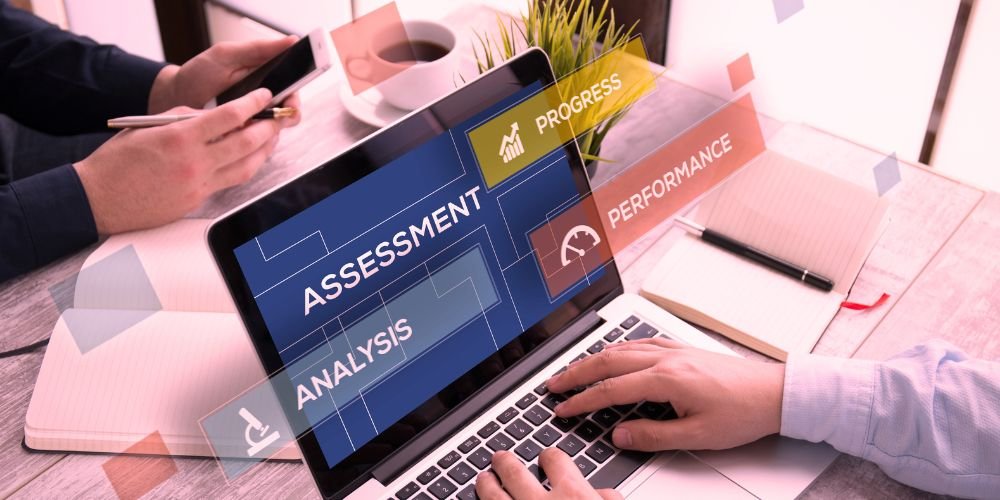Technology plays a pivotal role in driving business success, and as your company grows, the need for effective and efficient technology solutions becomes more critical. A technology needs assessment helps you identify the gaps in your current systems, understand what your organization requires to operate optimally, and plan for future technology investments. This guide will walk you through the steps to conduct a thorough technology needs assessment for your company, ensuring that your tech infrastructure supports your business goals.
Understanding the Importance of a Technology Needs Assessment
Conducting a technology needs assessment is a strategic move that helps align your technology investments with your company’s goals. It ensures that you are not just adopting the latest tech trends but rather implementing solutions that truly add value to your business.
Aligning Technology with Business Objectives
- Identifying Business Goals: Identify the key business objectives your company aims to achieve. Whether improving customer satisfaction, increasing operational efficiency, or expanding market reach, your technology needs assessment should align with these goals.
- Evaluating Current Challenges: Assess your organization’s challenges that may hinder progress toward these goals. These could include outdated software, inefficient processes, or a lack of integration between systems. Understanding these pain points helps pinpoint where technology can make a difference.
- Setting Priorities: Once you clearly understand your business goals and challenges, prioritize the technology needs that will have the most significant impact. This prioritization helps focus your efforts on the most critical areas and ensures that your assessment aligns with strategic priorities.
Involving Key Stakeholders
- Identifying Stakeholders: Identify the key stakeholders the technology assessment and implementation will impact. It includes department heads, IT staff, end-users, and executives. Involving stakeholders early ensures you capture a broad range of perspectives and needs.
- Conducting Interviews and Surveys: Engage stakeholders through interviews, surveys, or workshops to gather insights into their technology needs and challenges. This step is crucial for gaining a comprehensive understanding of the current tech landscape and identifying any gaps.
- Collaborative Decision-Making: Foster a collaborative environment where stakeholders can contribute to the decision-making process. This involvement not only increases buy-in but also helps make more informed decisions that reflect the entire organization’s needs.
Assessing Current Technology
A thorough evaluation of your existing technology infrastructure provides a baseline from which you can identify gaps and areas for improvement.
Reviewing Existing Systems and Tools
- Inventory of Current Technology: Create an inventory of all current technology systems, software, hardware, and tools used across your organization. Include details such as each asset’s age, functionality, usage, and performance. This inventory clearly shows what you have and how it’s being used.
- Assessing System Performance: Evaluate the performance and reliability of your existing systems. Are they meeting your business’s needs? Are there frequent outages or performance issues? Understanding how well your current technology performs helps identify systems needing upgrading or replacing.
- Evaluating User Satisfaction: Collect user feedback on their current technology experiences. Are they satisfied with their tools, or are there significant pain points? User feedback is invaluable in identifying areas where technology is not meeting expectations.
Analyzing Data Security and Compliance
- Security Assessment: Evaluate the security measures currently in place to protect your company’s data and systems. It includes reviewing firewalls, antivirus software, data encryption, and access controls. Identifying security gaps is critical to protecting your organization from cyber threats.
- Compliance Review: Ensure your technology infrastructure meets all relevant industry standards and regulations. Depending on your industry, it might include GDPR, HIPAA, or other regulatory requirements. Non-compliance can lead to significant legal and financial repercussions.
- Risk Management: Conduct a risk assessment to identify potential vulnerabilities in your technology systems. Understanding the risks allows you to develop strategies to mitigate them, ensuring that your technology is effective and secure.
Identifying Future Technology Needs
Looking ahead is an essential part of a technology needs assessment. This step involves forecasting future technology requirements based on business growth, market trends, and emerging technologies.
Projecting Business Growth and Tech Demands
- Growth Projections: Consider your company’s growth plans over the next few years. Are you expanding into new markets, launching new products, or scaling operations? Your technology needs will evolve with your business, so it’s essential to anticipate future demands.
- Scalability Requirements: Identify technology solutions that can scale with your business. It includes cloud-based solutions offering flexibility, software handling increased data loads, and systems supporting a growing workforce. Scalability is key to ensuring that your technology investment remains viable as your business grows.
- Innovation and Emerging Technologies: Stay informed about emerging technologies that could provide a competitive advantage. It could include AI, machine learning, IoT, or advanced analytics. Understanding the potential of these technologies helps in planning for future tech investments that can drive innovation.
Budgeting and Resource Allocation
- Estimating Costs: Based on the gaps identified in your assessment, develop a budget for your technology needs. This budget should include costs for new software, hardware, training, and implementation. Accurate cost estimation is essential for securing funding and avoiding budget overruns.
- Resource Planning: Assess the internal resources required to implement your technology strategy, including IT staff, project managers, and trainers. Determine whether you need additional personnel or engage external consultants to fill skill gaps.
- Return on Investment (ROI): Calculate the expected ROI for your technology investments. This will help justify the expenditures and ensure that the proposed solutions benefit your organization.
Developing an Implementation Plan
With a clear understanding of your current technology landscape and future needs, the next step is to develop a detailed implementation plan. This plan outlines how you will move from assessment to action.
Setting Goals and Timelines
- Defining Implementation Goals: Set clear, measurable goals for your technology implementation. These goals should align with the priorities identified during the needs assessment and be specific, achievable, and time-bound.
- Creating a Timeline: Develop a timeline for implementing the new technology solutions. It should include key milestones, deadlines, and dependencies. A well-structured timeline helps keep the project on track and ensures timely delivery.
- Assigning Responsibilities: Clearly define the roles and responsibilities of everyone involved in the implementation. Assign tasks to specific individuals or teams and ensure everyone understands their responsibilities and expectations.
Managing Change and Training
- Change Management: Develop a change management plan to address the human side of technology implementation. This plan should include communicating the benefits of the new technology to employees, addressing concerns, and managing resistance to change.
- Training Programs: Provide comprehensive training for all users to ensure they are comfortable and proficient with the new technology. Effective training minimizes disruptions and accelerates the adoption of new systems.
- Continuous Support: Offer ongoing support and resources to help users adapt to the new technology. It could include help desks, online resources, or dedicated support teams. Continuous support ensures that issues are quickly resolved and the technology is used to its full potential.
Monitoring and Evaluating Success
After implementing your new technology solutions, monitoring their performance and evaluating their impact on your business is essential.
Tracking Performance Metrics
- Monitoring KPIs: Regularly monitor the KPIs established during the assessment phase to measure the success of the technology implementation. This helps you understand whether the new systems deliver the expected benefits and contribute to business goals.
- User Feedback: Collect user feedback to gauge their satisfaction with the new technology. Are they finding it easier to perform their tasks? Are there any issues that need to be addressed? User feedback provides valuable insights into the effectiveness of the implementation.
- Performance Reviews: Conduct periodic performance reviews of the new technology to identify areas for improvement. Regular reviews help make necessary adjustments and ensure that the technology continues to meet your organization’s needs.
Continuous Improvement
- Iterative Refinement: Technology needs are not static; they evolve. Continuously refine and update your technology strategy based on new challenges, opportunities, and feedback. Iterative refinement ensures that your technology remains aligned with business needs.
- Staying Updated: Keep up-to-date with the latest technology trends and advancements. It allows your organization to be proactive rather than reactive, adopting new solutions that can provide a competitive edge.
- Learning from Experience: Reflect on the successes and challenges of the technology implementation process. Use these insights to improve future technology assessments and implementations, creating a continuous improvement cycle.
Conclusion
Conducting a technology needs assessment is critical in ensuring that your organization’s technology investments align with its business goals. By thoroughly assessing your current technology, involving key stakeholders, identifying future needs, and developing a detailed implementation plan, you can build a robust technology infrastructure that supports your company’s growth and success. Remember, the goal of a technology needs assessment is not just to adopt new technologies but to create a strategic, value-driven approach that enhances your organization’s capabilities and drives long-term success.









